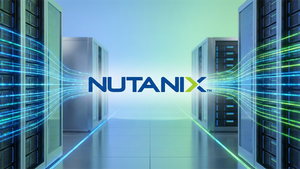
The global financial landscape is on the cusp of a profound transformation as major economies enact sweeping regulations for stablecoins. This concerted effort by jurisdictions like the United States, European Union, and United Kingdom is ushering in a new era of legitimacy and oversight for digital currencies pegged to traditional assets, fundamentally altering the operational dynamics for both the broader cryptocurrency market and publicly traded companies within the sector. These legislative shifts, moving stablecoins from the fringes of finance into a more defined regulatory perimeter, promise enhanced stability and consumer protection but also impose significant compliance burdens and strategic challenges.
The immediate implications are far-reaching, signaling a pivot towards a more institutionalized and transparent stablecoin ecosystem. While fostering greater trust and potentially accelerating mainstream adoption for payments and remittances, the new rules are set to reconfigure market leadership, potentially consolidating power among well-capitalized and compliant issuers. Companies across the financial spectrum, from fintech innovators to established banks, are now scrambling to adapt to these evolving frameworks, which demand robust reserve management, stringent audits, and clear legal standings for these increasingly vital digital assets.
A New Regulatory Epoch: Understanding the Global Stablecoin Mandate
The current wave of stablecoin regulation is a response to the rapid growth and systemic potential of these digital assets, which have, until recently, largely operated without comprehensive oversight. Concerns over financial stability, consumer protection, and illicit finance have spurred a global legislative race, with the US, EU, and UK leading the charge to establish clear rules of engagement. This push marks a critical turning point, aiming to integrate stablecoins into the regulated financial system while preserving their innovative potential.
In the United States, the landmark Guiding and Establishing National Innovation for U.S. Stablecoins Act (GENIUS Act) was signed into law in July 2025, providing a long-awaited comprehensive framework for payment stablecoins. The GENIUS Act prohibits any entity other than a "permitted payment stablecoin issuer" from issuing stablecoins and mandates that these issuers maintain 1:1 reserves of highly liquid assets such as US dollars, federal reserve notes, funds at insured depository institutions, and short-term Treasuries. Significantly, it clarifies that payment stablecoins issued by permitted issuers are not considered securities or commodities, placing them under the purview of banking regulators. The Act also explicitly prohibits offering yield or interest on stablecoins and requires monthly reports on reserve composition, certified by C-suite executives and examined by public accounting firms. These provisions are slated to take effect by January 2027, or 120 days after primary federal stablecoin regulators issue final regulations.
Across the Atlantic, the European Union's Markets in Crypto-Assets Regulation (MiCA) represents a pioneering, unified framework for crypto-assets across all 27 member states, with stablecoin-related rules becoming mandatory by December 30, 2024. MiCA distinguishes between e-money tokens (EMTs) and asset-referenced tokens (ARTs), both requiring robust reserve backing, regular audits, and redeemability at par on demand. Issuers must obtain authorization as an Electronic Money Institution (EMI) or a Crypto-Asset Issuer. Crucially, MiCA prohibits the offering of interest on stablecoins and restricts the usage of non-euro stablecoins in EU payments, explicitly banning algorithmic stablecoins. Major exchanges have already begun delisting stablecoins like Tether (USDT: crypto) in the EU to ensure compliance with MiCA's stringent requirements.
The United Kingdom is also rapidly advancing its regulatory agenda for stablecoins, with proposals under the Financial Services and Markets Act 2023 (FSMA 2023) integrating "digital settlement assets" into regulated financial activities. The Financial Conduct Authority (FCA) has proposed rules mandating 100% backing of UK-issued stablecoins with high-quality liquid assets, which must be segregated from the issuer's assets and held in a statutory trust. Issuers will require prior authorization from the FCA, while the Bank of England is set to regulate systemic stablecoins. The UK's regime aims for parity with MiCA, particularly if stablecoins achieve e-money status. This global timeline, with the EU and UK regulations rapidly approaching or already partially in effect and the US GENIUS Act providing a clear roadmap, underscores a concerted global effort to bring order to the stablecoin market.
Initial market reactions have been a mix of caution and strategic repositioning. Stablecoin issuers are accelerating efforts to comply, while traditional financial institutions are eyeing opportunities to enter this newly regulated space. The shift towards fully-backed, audited stablecoins is already favoring transparent and well-governed assets, leading to a consolidation within the market and prompting some less transparent or uncollateralized stablecoins to face delisting or diminished usage.
The Shifting Sands: Who Wins and Who Loses in the New Stablecoin Era
The advent of comprehensive global stablecoin regulations will inevitably create a clear delineation of winners and losers within the financial ecosystem. The new rules prioritize stability, transparency, and consumer protection, directly impacting the operational viability and competitive advantages of various market participants.
Winners are likely to include established traditional financial institutions and well-capitalized, compliant stablecoin issuers. Traditional banks, for instance, are uniquely positioned to leverage the new regulatory clarity. With frameworks like the US GENIUS Act classifying payment stablecoins under banking regulation, institutions like JPMorgan Chase & Co. (NYSE: JPM) and Wells Fargo & Company (NYSE: WFC) could launch their own branded stablecoins or tokenized deposits with greater confidence, leveraging their existing regulatory infrastructure, trust, and deep liquidity pools. Their ability to manage reserves, navigate complex compliance, and handle large-scale financial operations makes them ideal candidates to issue the next generation of regulated stablecoins. Similarly, established stablecoin issuers that have already prioritized robust reserve management and transparency, such as Circle Internet Financial (Private) with its USD Coin (USDC: crypto), are likely to thrive. Their proactive approach to compliance and readiness to meet stringent audit and reserve requirements will solidify their market position, potentially expanding their share as less compliant competitors struggle. The increased legitimacy could also attract more institutional investment and wider adoption for these trusted digital assets.
On the other hand, smaller, less capitalized stablecoin issuers and algorithmic stablecoins are poised to be the losers. The significant costs associated with obtaining necessary licenses, implementing robust compliance systems, undergoing regular audits, and maintaining 1:1 reserves of high-quality liquid assets will prove prohibitive for many smaller players. This could lead to a consolidation of the stablecoin market, with larger entities absorbing or outcompeting their smaller rivals. Furthermore, regulations like MiCA explicitly prohibit algorithmic stablecoins, which rely on complex software and arbitrage mechanisms rather than direct asset backing to maintain their peg. This regulatory stance, a direct response to past failures like TerraUSD (UST: crypto), effectively shutters the market for such instruments in key jurisdictions. Stablecoin issuers that have historically lacked transparency in their reserve holdings, like Tether Holdings Limited (Private) with its USDT (crypto), will face immense pressure to adapt or risk losing market share in regulated environments. The EU's MiCA, for instance, has already prompted some exchanges to delist USDT, highlighting the immediate impact of these new rules. Public companies operating crypto exchanges or offering stablecoin-related services will also incur substantial compliance costs and may need to conduct extensive due diligence on listed stablecoins, potentially reducing the variety of stablecoins available to users.
Industry Tectonic Shifts: Broader Implications and Historical Parallels
The global stablecoin regulatory wave represents a monumental shift that resonates far beyond the immediate digital asset market, signifying a broader integration of crypto into the mainstream financial system. This development is not merely an isolated event but rather a critical step within a larger trend towards the institutionalization and legitimization of digital finance. It addresses long-standing concerns about market integrity, investor protection, and systemic risk, thereby paving the way for wider acceptance and utilization of stablecoins in traditional financial applications.
The regulatory clarity provided by frameworks like the US GENIUS Act, EU MiCA, and UK proposals is poised to catalyze several ripple effects across the financial ecosystem. For traditional financial institutions, the reduced regulatory uncertainty lowers the barrier to entry, potentially spurring a wave of innovation in tokenized assets, cross-border payments, and instant settlements. Banks and payment processors may increasingly leverage stablecoins for more efficient and cost-effective transactions, creating new revenue streams and enhancing their digital offerings. Conversely, existing crypto exchanges and fintech companies will face intensified competition from these traditional players, necessitating strategic pivots towards compliance, enhanced security, and differentiated services to retain market share. The demand for US dollar-pegged stablecoins and the associated requirement for holding US dollars and short-term Treasuries as reserves could also subtly reinforce the US dollar's role in global finance, potentially impacting international currency dynamics and global fiscal accounts.
These regulatory efforts bear strong historical parallels to the evolution of other financial instruments and markets. The establishment of the Securities and Exchange Commission (SEC) in the 1930s, following the 1929 stock market crash and the Great Depression, mirrored a similar legislative response to market instability and public distrust. Just as those regulations aimed to restore confidence and prevent future abuses in traditional securities markets, current stablecoin regulations seek to instill similar trust and stability in the nascent digital asset space. More recently, the stringent oversight applied to money market funds after various liquidity crises also provides a relevant comparison, highlighting the regulatory imperative to ensure that instruments perceived as "safe" are indeed backed by robust and transparent assets. These historical precedents suggest that while initial compliance costs may be high, the long-term outcome is often a more resilient, trustworthy, and ultimately larger market. This regulatory intervention is likely to usher in an era where the stablecoin market, once characterized by rapid, often unregulated growth, matures into a vital, regulated component of the global financial infrastructure.
The Road Ahead: Navigating the Future of Stablecoins
The regulatory milestones achieved across the globe for stablecoins are not the end, but rather the beginning of a dynamic new chapter for digital finance. In the short term, the market will witness a flurry of activity as stablecoin issuers, exchanges, and financial institutions scramble to achieve compliance with the new legal frameworks. This will involve significant investment in legal counsel, technology upgrades for reserve management and reporting, and strategic decisions regarding product offerings and market focus. We can anticipate a period of consolidation within the stablecoin market, with a clear separation emerging between fully compliant, well-audited stablecoins and those that fail to meet the stringent new requirements. The delisting of non-compliant stablecoins from regulated platforms, as seen with some stablecoins in the EU in anticipation of MiCA, will become more commonplace.
Looking further ahead, the long-term possibilities are transformative. The enhanced regulatory clarity and stability are expected to unlock greater institutional adoption of stablecoins for a multitude of use cases, including cross-border payments, corporate treasury management, and potentially even central bank digital currency (CBDC) experimentation. Strategic pivots will be essential for existing crypto players, who may need to partner with traditional financial institutions to navigate regulatory complexities or focus on niche markets where their innovative strengths can still flourish. New market opportunities will emerge for technology providers specializing in compliance solutions, audit services for digital assets, and infrastructure for regulated stablecoin issuance. Companies that successfully adapt by prioritizing transparency, robust governance, and seamless integration with traditional financial systems will be best positioned to capitalize on these opportunities.
However, challenges remain. The interoperability between different regulatory regimes—US, EU, UK, and others—will be a key area to watch. Harmonization of global standards, while desirable, is a complex undertaking, and differences could create regulatory arbitrage opportunities or fragmentation. The evolution of decentralized finance (DeFi) in a regulated stablecoin environment also presents a complex challenge, as regulators grapple with how to apply traditional financial rules to inherently permissionless systems. Potential scenarios range from a highly centralized stablecoin market dominated by a few regulated entities to a hybrid model where regulated stablecoins coexist with decentralized alternatives, albeit with clear distinctions in their risk profiles and accessibility. The ongoing dialogue between regulators and innovators will shape these outcomes, but the trajectory is clear: stablecoins are destined to play an increasingly central, yet highly regulated, role in the future of finance.
Conclusion: A New Dawn for Digital Currency
The global push for stablecoin regulation marks a pivotal moment in the evolution of digital finance, fundamentally reshaping the landscape for issuers, users, and the broader financial market. The comprehensive frameworks emerging from the US (GENIUS Act), EU (MiCA), and UK proposals signal a clear commitment to integrating stablecoins into the regulated financial system, prioritizing stability, transparency, and consumer protection above all else. This coordinated effort, with requirements for 1:1 asset backing, stringent oversight, and regular audits, aims to eradicate the speculative risks that have historically plagued parts of the crypto market.
The key takeaway from this regulatory wave is the clear move towards legitimization and institutional adoption. While presenting significant compliance burdens and operational costs, particularly for smaller entities, these regulations also unlock unprecedented opportunities for growth and innovation. Well-capitalized stablecoin issuers and traditional financial institutions are poised to benefit most, leveraging their existing infrastructure and expertise to thrive in a more regulated environment. The market will likely consolidate, favoring stablecoins that can demonstrate ironclad reserves and robust governance, thereby fostering greater trust among both retail and institutional investors.
Moving forward, investors should closely monitor several key areas. The implementation timelines and the specific interpretations of regulatory guidance by national authorities will be crucial. The ability of stablecoin issuers to adapt their business models, invest in compliance infrastructure, and potentially form strategic partnerships will determine their long-term viability. Furthermore, the global coordination—or lack thereof—among regulators will shape the future fragmentation or harmonization of the stablecoin market. The impact on the DeFi ecosystem, and how decentralized stablecoins evolve in response to centralized regulation, will also be a critical watchpoint. Ultimately, while the path ahead involves challenges, the current regulatory push is setting the stage for stablecoins to become an even more integral and reliable component of the global financial system, promising a more secure and efficient future for digital transactions.






